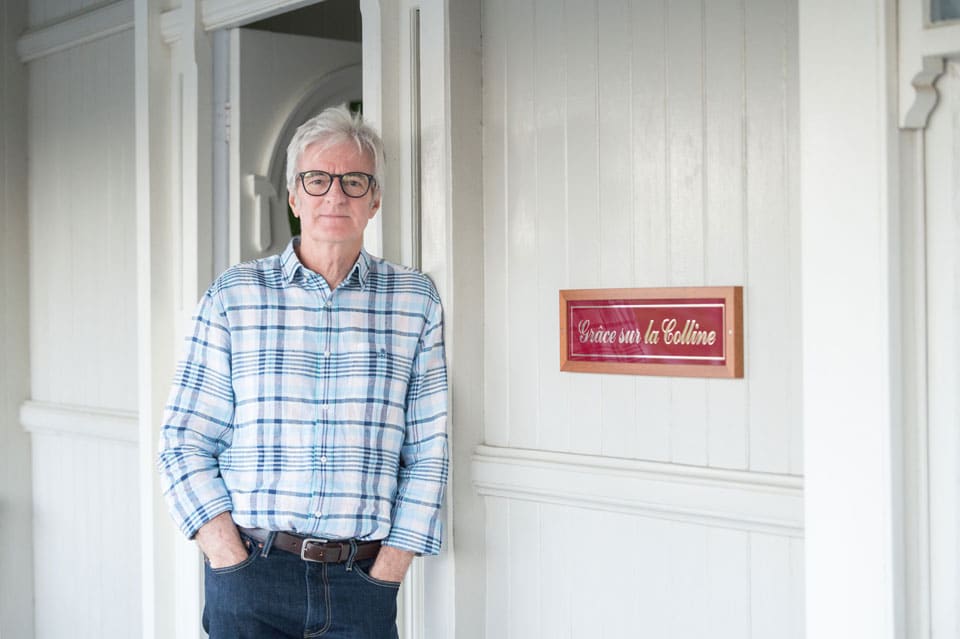The Gentle Art of Conversation Leaders Need to Master

If we learn to hold better ‘normal’ conversations then we’re less likely to have to hold the ‘difficult’ ones.
The First Officer came up to me, coffee in hand, and one for me. Unexpected. Very generous. That’s him. We were about to depart on our 9 hour international flight, 300 passengers and crew on board, all trusting us. I didn’t know him well, but enough to regard him as a very amiable, professional colleague.
Settled in at our cruising altitude, 8 or so hours to fly, with inflight refreshments delivered by our Cabin Crew, he turns to me and asks, ‘Does the state of the world and all that’s going on in it, ever make you feel hopeless?” Just like that. No warning. Nothing.
That’s a big statement. Really big. Should we be concerned? Is this one of those ‘difficult’ conversations we’ve heard about or not? We have to find out, and there’s only one way.
Why did he ask it? In reality, it was less a question and more a statement, designed to send me a message. People do this all the time in our organisations yet most of the time we miss the signs.
We can all recall times when a person has said something to us, something so big it just takes us aback, such is the magnitude of their words. The really big, often personal statements. We’re left astounded and asking ourselves if they really meant to say it. Well, yes they did. That was no coincidence, no fluke.
They wanted you to hear it, and they’re sending you two messages.
The message is not just contained within the specific words. It’s that they trust you, and we must repay that trust. Sure, they want you to hear their concern, but they’re also taking a chance and trying you out. They’ve picked the moment.
What now?
One thing is for certain, they don’t need us to solve it for them. They may want us to, but that won’t fix things. In fact, if we continually solve other’s problems, we’re subliminally insulting them, telling them they don’t have the ability to fix things themselves. It’s just not right.
At this moment, our reaction is potent. They’ve confided in us. They need our respect to show. They want to know they’re not alone with whatever is going on. They could be lost, scared, depressed, directionless, underconfident; anything. It could be that they are unsure what’s going on themselves. The chances are they’re not looking for a counsellor, but a mentor, a role model; someone who’s been around in their field.
Well this is awkward? It doesn’t have to be. These work.
- Ask, ask and ask again. Don’t tell.
Why? It’ll show real respect for them and their own opinion, immediately. It shows you’re focussing on them and that you understand the issue is seriously important to them; that it matters to you too. It may be minor to you, but it’s not about you, is it? No, not now. But you’re in a potent position now. You could be about to change this person’s life altogether. - Even if you think you know the answer, just don’t tell them what to do. I’ve been at my most influential when I’ve said very little.
Power your normal conversations further, like this.
Those ‘difficult conversations’ we hear a lot about? Don’t worry. It doesn’t have to be deep. In fact, what really works is to just scratch the surface a little, and certainly not so much that it scares them away.
What we really need is to be able to hold better ‘normal’ conversations.
Before we get to the point our First Officer reached, make time for your staff. It will pay big time.
- Just ask, ‘Tell me about you.’ That’s all. Then let them run. Make it obvious you’re genuinely interested in them. Pay close attention to their words. If they do have something going on (professional or personal), after a while you’ll pick up on it.
- Then just ask a bit more, like ‘So what’s actually going on with this…’. Again, don’t try to solve anything, even if you think you know the answer (we really don’t).
- If you’re on a timeline (say, 30 minutes), be ready for the last 5 minutes. That’s often when the real issue comes out, just as they’re about to leave. Be prepared. Allow an extra 5 and ask, ‘So that’s what’s really bothering you?’
- Speak quietly and listen. Quietly spoken acknowledgements are the most powerful.
And real leaders know this – the real key why people talk to them.
Remember, there was a reason this person spoke to you. And if no-one is speaking to you, then give them a reason to do so. The reason? Trust. (Remember the First Officer). Trust starts with humility, and humility is power. There is no more influential attribute for a leader with which to build a genuine following than humility. Humility is true power. Acquire it, watch others open up to you and see your standing soar.
Written by Chris Smith.
Bring the best of the CEOWORLD magazine's global journalism to audiences in the United States and around the world. - Add CEOWORLD magazine to your Google News feed.
Follow CEOWORLD magazine headlines on: Google News, LinkedIn, Twitter, and Facebook.
Copyright 2025 The CEOWORLD magazine. All rights reserved. This material (and any extract from it) must not be copied, redistributed or placed on any website, without CEOWORLD magazine' prior written consent. For media queries, please contact: info@ceoworld.biz








